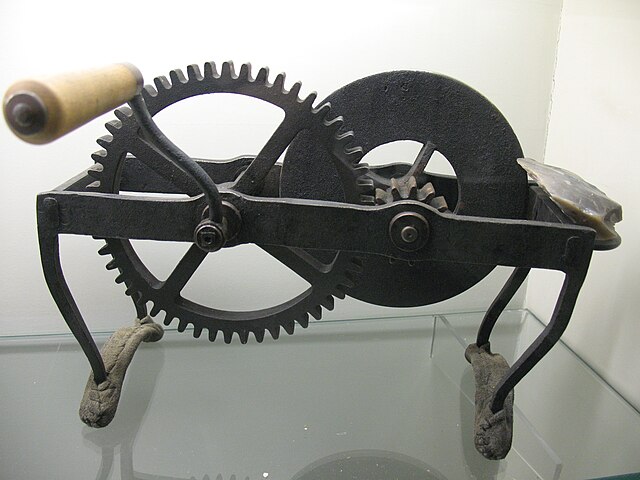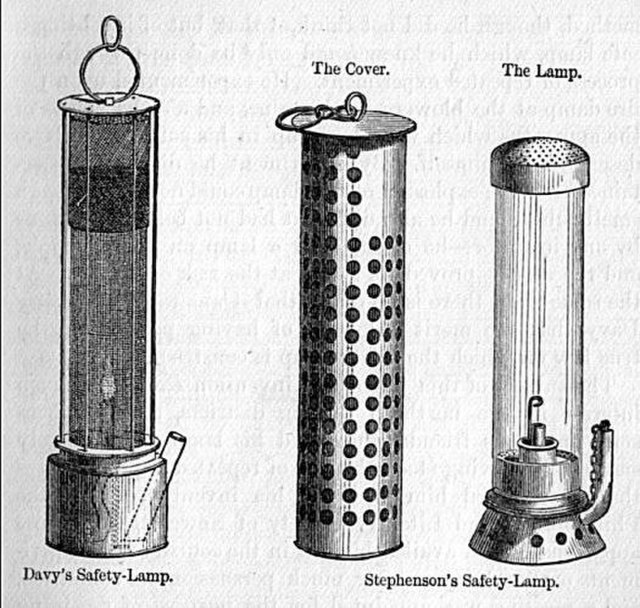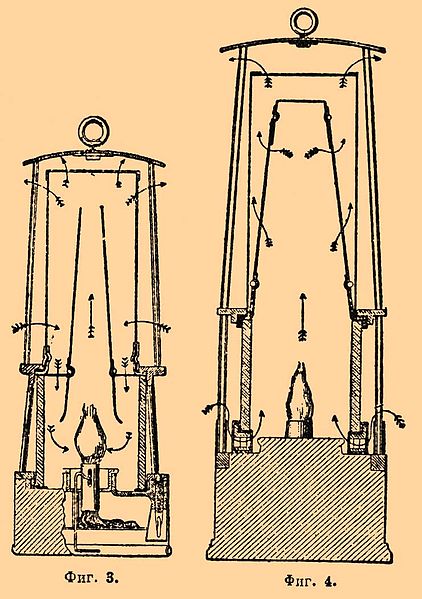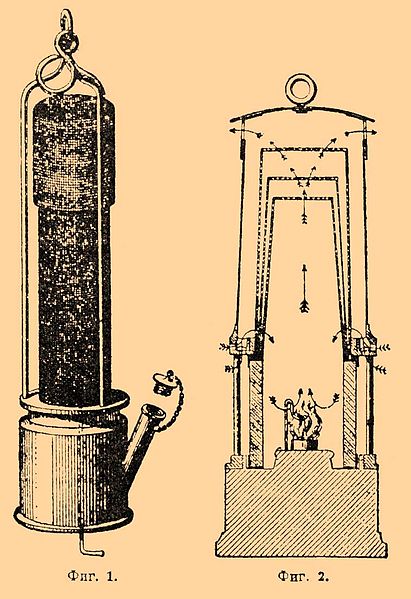The Davy lamp is a safety lamp used in flammable atmospheres, invented in 1815 by Sir Humphry Davy. It consists of a wick lamp with the flame enclosed inside a mesh screen. It was created for use in coal mines, to reduce the danger of explosions due to the presence of methane and other flammable gases, called firedamp or minedamp.
Davy's first safety lantern, 1815 (at left)
A type of Davy lamp with apertures for gauging flame height
A safety lamp is any of several types of lamp that provides illumination in places such as coal mines where the air may carry coal dust or a build-up of inflammable gases, which may explode if ignited, possibly by an electric spark. Until the development of effective electric lamps in the early 1900s, miners used flame lamps to provide illumination. Open flame lamps could ignite flammable gases which collected in mines, causing explosions; safety lamps were developed to enclose the flame to prevent it from igniting the explosive gases. Flame safety lamps have been replaced for lighting in mining with sealed explosion-proof electric lights, but continue to be used to detect gases.
Spedding mill at the German mining museum, Bochum, Northrhine-Westfalia, Germany
Early form of Stephenson lamp shown with a Davy lamp on the left
Mueseler lamp (on the left) and a derivative of the Geordie
Marsaut lamp (on the right) showing a triple mesh variant






